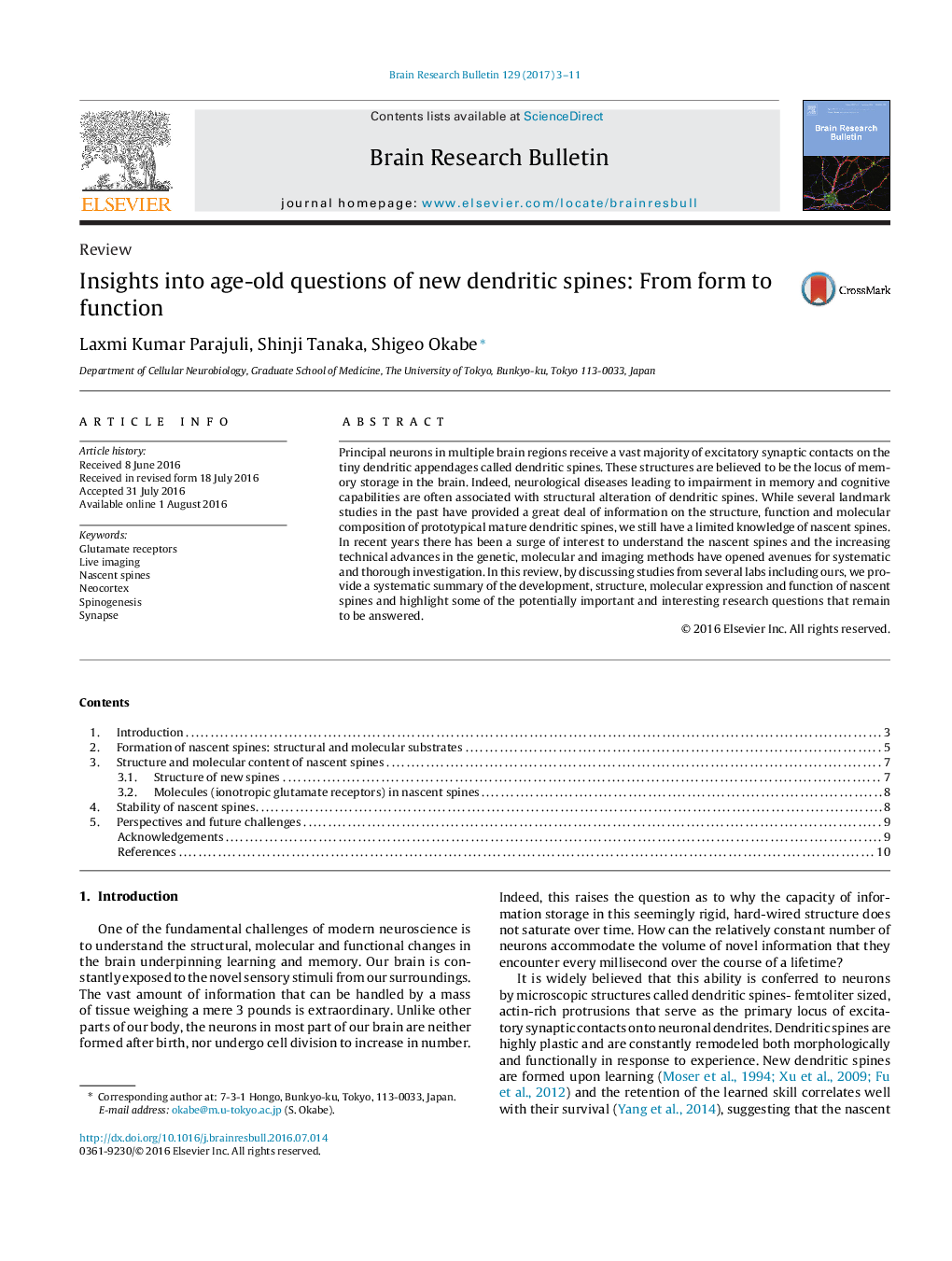| Article ID | Journal | Published Year | Pages | File Type |
|---|---|---|---|---|
| 5736339 | Brain Research Bulletin | 2017 | 9 Pages |
â¢New spines form in response to neural activity.â¢Structural and molecular characteristics of new spines differ from the mature ones.â¢Multiple factors determine the lifetime of new spines.â¢The functional relevance of new spines at the network level is not fully clear.
Principal neurons in multiple brain regions receive a vast majority of excitatory synaptic contacts on the tiny dendritic appendages called dendritic spines. These structures are believed to be the locus of memory storage in the brain. Indeed, neurological diseases leading to impairment in memory and cognitive capabilities are often associated with structural alteration of dendritic spines. While several landmark studies in the past have provided a great deal of information on the structure, function and molecular composition of prototypical mature dendritic spines, we still have a limited knowledge of nascent spines. In recent years there has been a surge of interest to understand the nascent spines and the increasing technical advances in the genetic, molecular and imaging methods have opened avenues for systematic and thorough investigation. In this review, by discussing studies from several labs including ours, we provide a systematic summary of the development, structure, molecular expression and function of nascent spines and highlight some of the potentially important and interesting research questions that remain to be answered.
